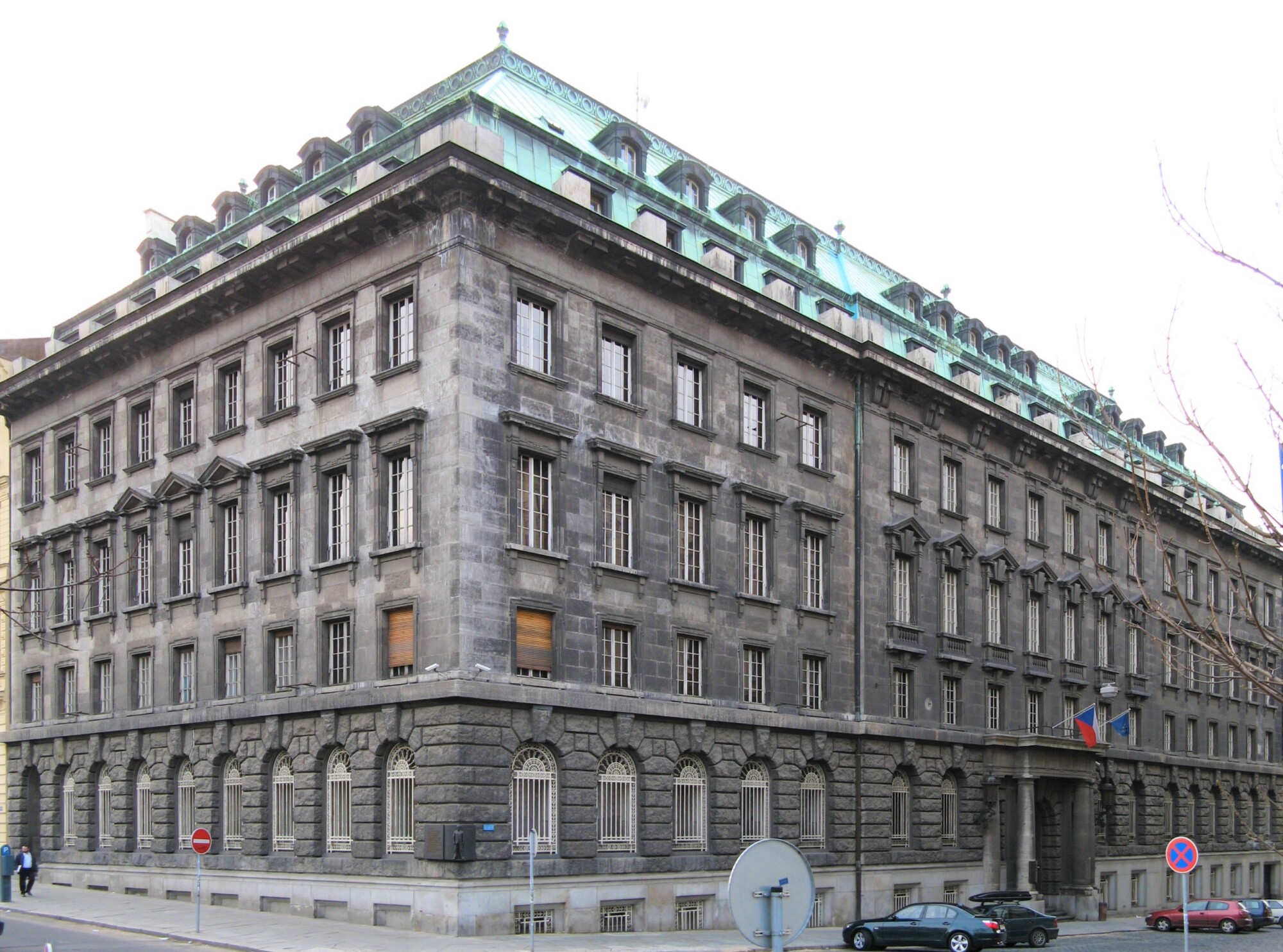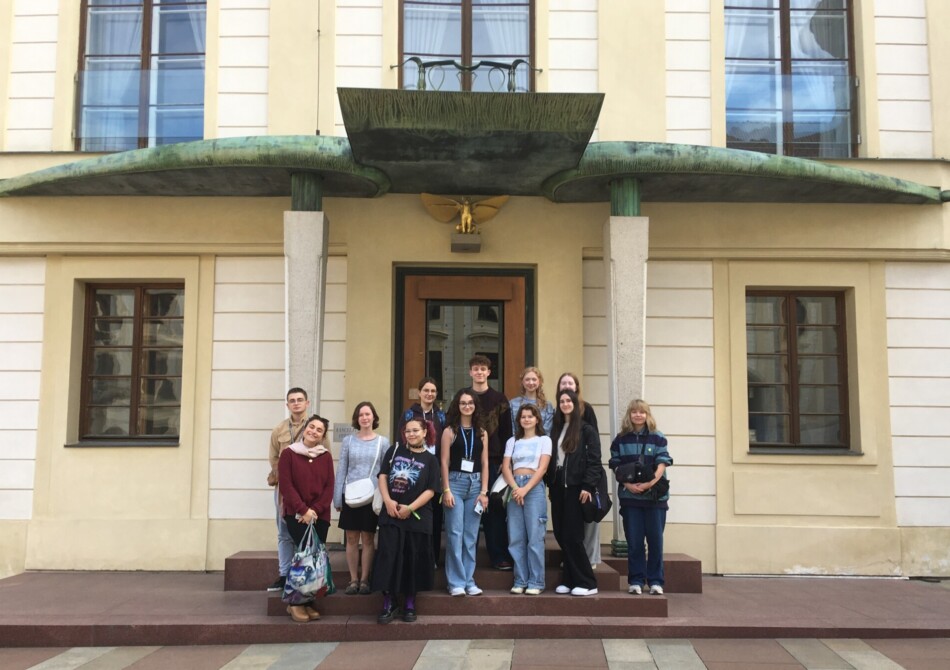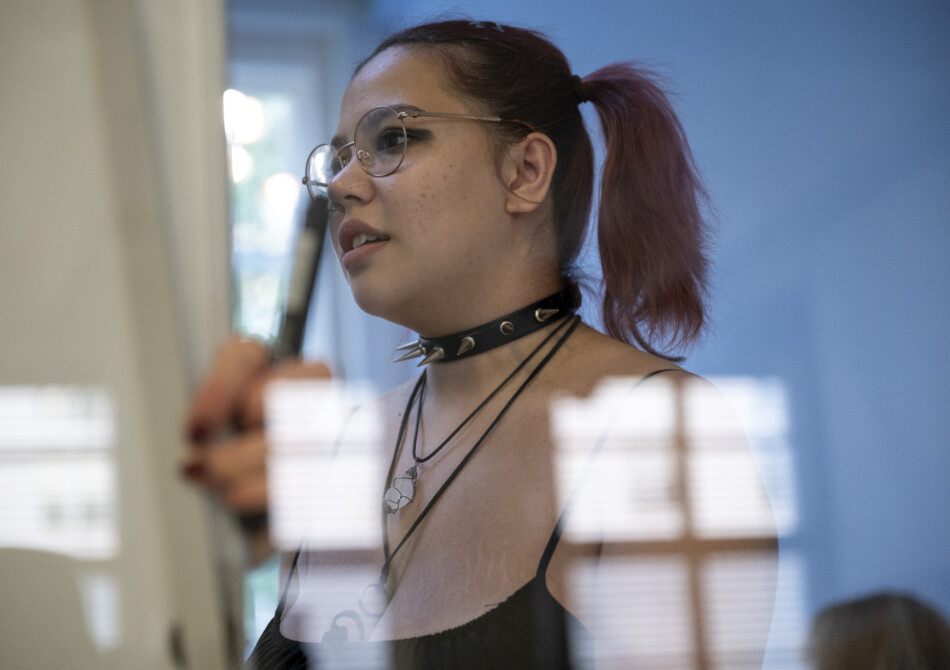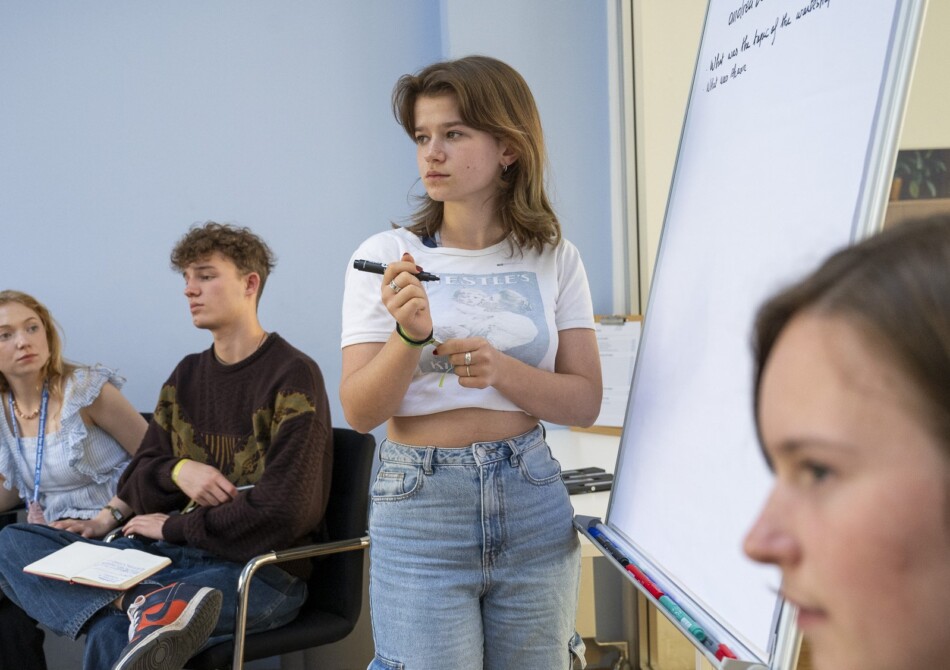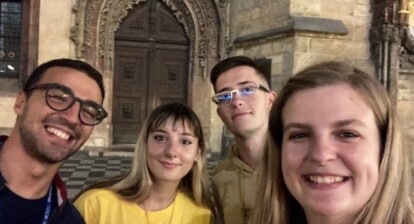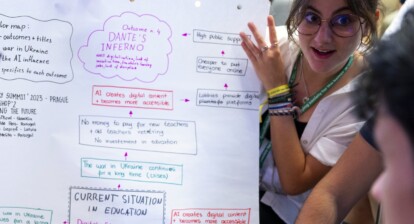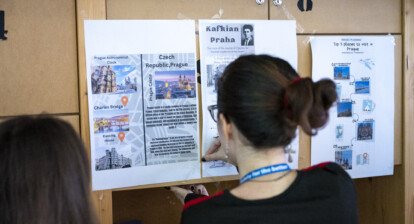How to deal with a dark past when it’s cast in stone? What does architecture teach us about history? How to balance between commemorating victims and using historic spaces today?
To elaborate on these delicate questions, participants of the EUSTORY Summit-workshop “Tracing Places: Buildings with a Painful Past on Trial” took a closer look at Palais Petschek in Prague: A building originally erected as a bank, which after its Aryanisation served as the headquarter of the Gestapo. It was never returned to its original owners after World War II, but housed the Ministry of Foreign Trade first, and after 1989 the Ministry of Economics as well as a small exhibition about the building’s history in the basement – until today.
How is the building’s troubled past remembered? To find out, a visit of the exhibition whose conceptualisation dates back to the early 1990s when Czechoslovakia was a socialist state, formed the workshop’s starting point. The controversial, one-sided presentation of artefacts, a missing respectful commemoration of victims, as well as used wordings and narratives let the participants experience first-hand that every form of documentation and commemoration must be viewed under the critical light of the institutions and political circumstances forming the framework of memory culture at the respective time.
During the workshop, the 13 participants from 12 different countries became true experts in putting architectural traces into historical context: In order to understand the period in which Palais Petschek was built and what Prague looked like at that time, the group explored even more buildings and compared their present use as well as controversies and debates coming along with it, with examples from their home countries.
The result: a guideline on how to define and how to handle historic places with a complicated past.
Scroll down to find out more!

